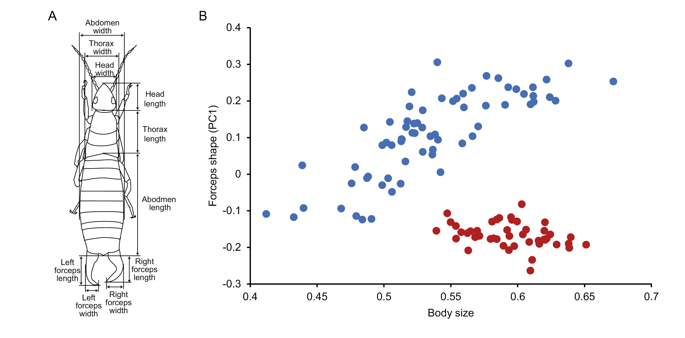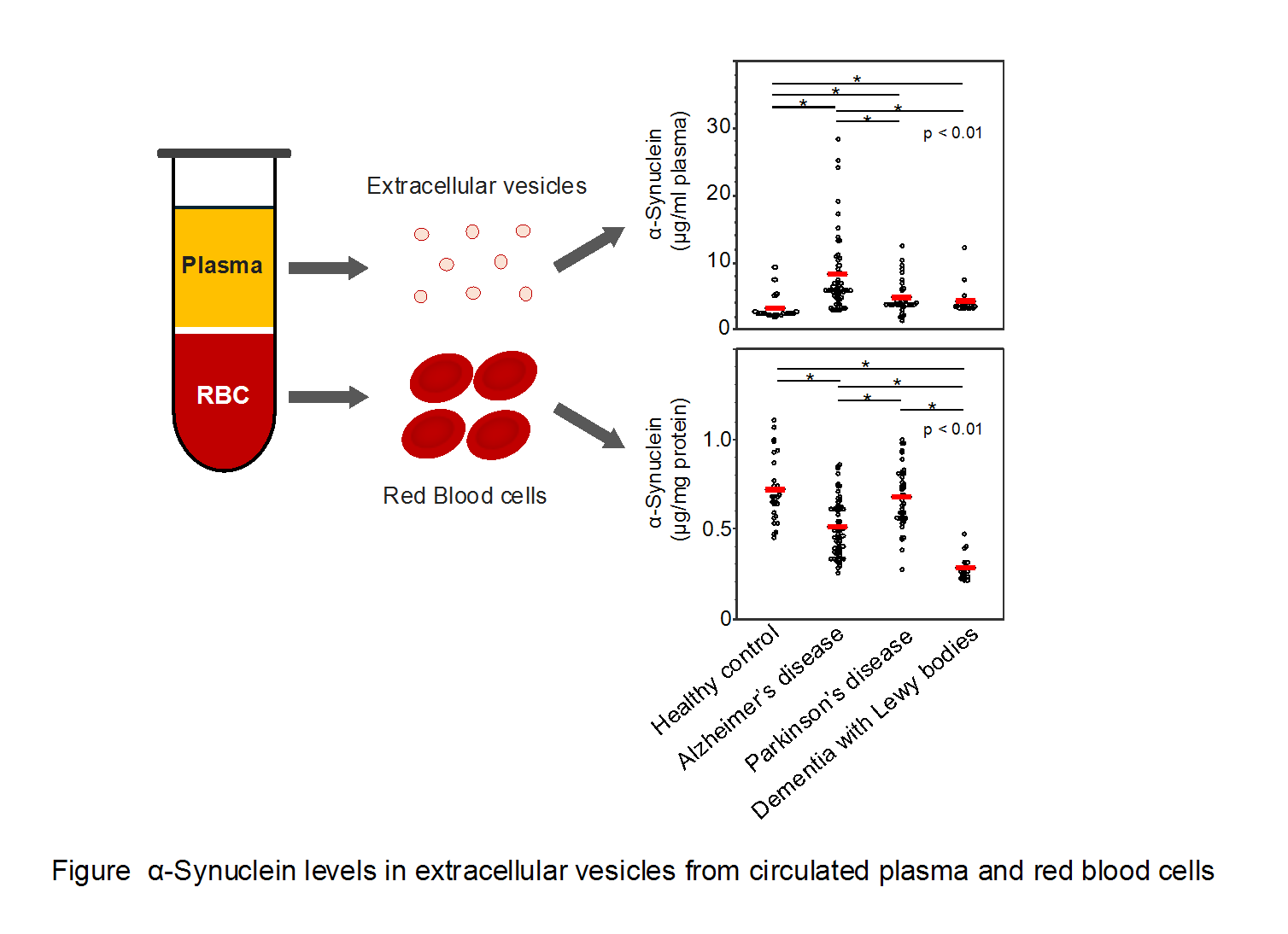May 09, 2022
Japanese snail mite, previously thought to be the same species as the French mite, is now a new subspecies.
Named as a novel subspecies from Okinawa Island, Kyushu, and northwards

Key Points
- The snail mite R. reaumuri is a parasitic mite that infects snails and slugs, and was described as a new species in France in 1986, with collections reported from Japan 32 years later, in 2018. It is thought to be widely distributed from France to Japan and has one of the largest distribution ranges of snail-specific parasites.
- Widely distributed species can differ in morphology between regions, especially in geographically isolated areas where subspecies can evolve.Therefore, when the research group collected specimens of R. Reaumuri from various locations throughout Japan and closely examined their morphology, they found that minute differences in morphology could be recognized and be used to distinguish among mites from France, Okinawa Island, and Kyushu and northward. Moreover, these Japanese specimens were designated as two new subspecies. The two subspecies found in Japan were named “Nihon daidai katatsumuridani” and “Ryukyu daidai katatsumuridani”.
- It is highly likely that the two subspecies discovered in this study differentiated uniquely from the continental ones in the island nation of Japan.



A working group of researchers comprising Dr. Tsukasa Waki of Toho University, Dr. Risho Motochin of Japan Wildlife Research Center, Professor Takahiro Asami of Shinshu University, and Professor Satoshi Shimano of Hosei University has reported two Japanese subspecies of a species of snail mite, Riccardoella reaumuri Fain & van Goethem. The paper was published in Systematic and Applied Acarology (ISSN:13621971) in May 2022.
Key Points
- The snail mite R. reaumuri is a parasitic mite that infects snails and slugs, and was described as a new species in France in 1986, with collections reported from Japan 32 years later, in 2018. It is thought to be widely distributed from France to Japan and has one of the largest distribution ranges of snail-specific parasites.
- Widely distributed species can differ in morphology between regions, especially in geographically isolated areas where subspecies can evolve.Therefore, when the research group collected specimens of R. Reaumuri from various locations throughout Japan and closely examined their morphology, they found that minute differences in morphology could be recognized and be used to distinguish among mites from France, Okinawa Island, and Kyushu and northward. Moreover, these Japanese specimens were designated as two new subspecies. The two subspecies found in Japan were named “Nihon daidai katatsumuridani” and “Ryukyu daidai katatsumuridani”.
- It is highly likely that the two subspecies discovered in this study differentiated uniquely from the continental ones in the island nation of Japan.
Content
The snail mite R. reaumuri is approximately 0.5 mm long. It parasitizes the lungs and body surfaces of various species of land snails and slugs, but not humans. This mite was first reported in French snails in 1986. Subsequently, the same species was discovered in Okinawa, Japan, in 2018 and later surveys showed that it is widely distributed from Okinawa to Hokkaido in Japan. Thus, this mite species is distributed from France to Japan, which is considered to be one of the largest distribution ranges of land snail parasites.
However, when a species with poor mobility is widely distributed, geographic variation accumulates in each region, especially on isolated islands, where it can easily become a subspecies. Land snails are not horizontal migrants, meaning that they cannot travel long distances or cross oceans. The snail mite is also a microscopic parasite; therefore, it is thought to be incapable of long distance travel on its own. Therefore, the research group examined the morphology of individual mites in each region in detail and compared them, as it is unlikely that these mites, which lack mobility, are identical in France and the Japanese archipelago. They found that the morphology of microscopic bristles and body size differed from region to region. Based on this, the mites from Okinawa Island and those from Kyushu and northward were named subspecies “Ryukyu dai dai katatsumuridani” and “Nihon dai dai katatsumuridani”, respectively.
There are eight species of snail mites, of which four, including this species, are distributed worldwide. However, this is the first study to distinguish the microscopic morphology of mites in each region and identify them as subspecies. The discovery of these subspecies proves that even globally distributed species have some differences within the Japanese archipelago, which is separated from mainland Asia by the sea. Moreover, it is evident that understanding biodiversity in Japan is important from a global perspective, and the importance of biodiversity does not differ for parasites.
The snail mite R. reaumuri is approximately 0.5 mm long. It parasitizes the lungs and body surfaces of various species of land snails and slugs, but not humans. This mite was first reported in French snails in 1986. Subsequently, the same species was discovered in Okinawa, Japan, in 2018 and later surveys showed that it is widely distributed from Okinawa to Hokkaido in Japan. Thus, this mite species is distributed from France to Japan, which is considered to be one of the largest distribution ranges of land snail parasites.
However, when a species with poor mobility is widely distributed, geographic variation accumulates in each region, especially on isolated islands, where it can easily become a subspecies. Land snails are not horizontal migrants, meaning that they cannot travel long distances or cross oceans. The snail mite is also a microscopic parasite; therefore, it is thought to be incapable of long distance travel on its own. Therefore, the research group examined the morphology of individual mites in each region in detail and compared them, as it is unlikely that these mites, which lack mobility, are identical in France and the Japanese archipelago. They found that the morphology of microscopic bristles and body size differed from region to region. Based on this, the mites from Okinawa Island and those from Kyushu and northward were named subspecies “Ryukyu dai dai katatsumuridani” and “Nihon dai dai katatsumuridani”, respectively.
There are eight species of snail mites, of which four, including this species, are distributed worldwide. However, this is the first study to distinguish the microscopic morphology of mites in each region and identify them as subspecies. The discovery of these subspecies proves that even globally distributed species have some differences within the Japanese archipelago, which is separated from mainland Asia by the sea. Moreover, it is evident that understanding biodiversity in Japan is important from a global perspective, and the importance of biodiversity does not differ for parasites.


The three subspecies of Riccardoella reaumuri
Journal:
Systematic and Applied Acarology
Title:
Two subspecies of the snail mite Riccardoella (Proriccardoella) reaumuri Fain & van Goethem, 1986 (Acari, Prostigmata, Ereynetidae) from Japan
Authors:
Tsukasa Waki, Risho Motochin, Takahiro Asami, Satoshi Shimano
DOI No.
10.11158/saa.27.5.2
Systematic and Applied Acarology
Title:
Two subspecies of the snail mite Riccardoella (Proriccardoella) reaumuri Fain & van Goethem, 1986 (Acari, Prostigmata, Ereynetidae) from Japan
Authors:
Tsukasa Waki, Risho Motochin, Takahiro Asami, Satoshi Shimano
DOI No.
10.11158/saa.27.5.2
READ MORE RESEARCH NEWS - SCIENCE
ACADEMICS
Undergraduate Programs
– Medicine
– Pharmaceutical Sciences
– Science
– Nursing
– Health Science
Graduate Programs
–Medicine
–Pharmaceutical Sciences
–Science
–Nursing
Undergraduate Programs
– Medicine
– Pharmaceutical Sciences
– Science
– Nursing
– Health Science
Graduate Programs
–Medicine
–Pharmaceutical Sciences
–Science
–Nursing
RESEARCH
– News
– Guidelines & Policies
– Support Offices
– Facilities
– Security Export Control
Non-Degree Programs
– Clinical Elective Program
– International Physician Observership Program




